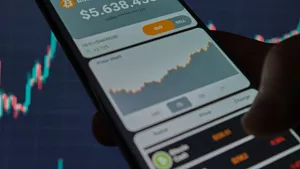General Prosecutor's Office Issues Practical Guide for Identifying, Tracing, and Seizing Crypto-Assets
The aim of the Guide is that public agencies understand crypto-assets and their mechanisms to track transactions and confiscate those involved in criminal activities.

On May 12, 2023, the Public Prosecutor’s Office issued Resolution No. 33/23, announcing the “Practical Guide for the identification, traceability, and seizure of crypto assets”. This Guide was drafted by the Specialized Cybercrime Prosecution Unit (UFECI), together with other secretariats and units.
In its press release, the Public Prosecutor´s Office highlighted that this Guide was written due to the immense growth the digital sector has had in Argentina, especially regarding the offer of products and services related to crypto assets. The press release also stated that such growth has resulted in “an accelerated increase in criminal activity related to crypto-assets.” Hence, the Public Prosecutor’s Office interpreted that there was a need to explain and improve the understanding of crypto-assets, to prepare the government’s criminal investigation sector.
Certain features of cryptoassets are depicted as challenging for the mission of the Public Prosecutor’s Office. These include the pseudonymity[1] implied in transactions with crypto-assets, the complexity of the mathematical or computer processes used, the high variation the value of crypto-assets can undergo, and the cross-border nature of crypto-asset operations and transactions, among others.
The aim of the Guide is that public agencies have a minimum understanding on the topic of crypto-assets, to track different transactions and take on the necessary measures, such as confiscating any crypto-asset related to criminal activity.
The Guide includes an introduction to the Guide detailing the context in which it was drafted, a general guidance on crypto-assets, the different classifications and denominations that exist, and sections on
a) blockchain,
b) crypto-asset transactions,
c) crypto-asset mining
d) digital wallets,
e) investigative aspects related with crypto-assets,
f) possible forensic evidence,
g) cryptoasset confiscation, and
h) legal aspects.
[1] On the crypto-asset scene, we use the concept of “pseudonymity” because there is no need to provide personal information to possess an address on the blockchain. Hence, while addresses on most blockchains can be publicly known, the person/s behind each address are seldom identified.
This insight is a brief comment on legal news in Argentina; it does not purport to be an exhaustive analysis or to provide legal advice.